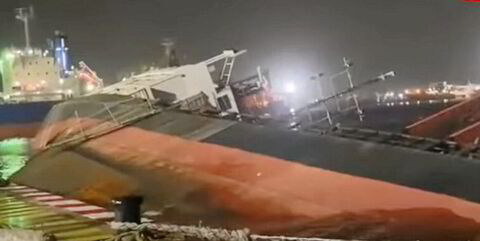An uptick in Russian attacks on vessels trading in Ukraine has increased pressure on war insurance rates for ships in the Black Sea.
Additional war risk premiums in the region are 0.7% to 0.8% of total hull values, but four attacks in a month could reverse the decline in rates seen during months of relative calm.
Russia launched its latest attack late on Monday against the 5,800-dwt Optima (built 2008), moored at a port in the Greater Odesa region.
The attack, which killed a port worker and injured up to five seafarers, was the second in 48 hours and the fourth in the past month.
Security experts told TradeWinds that the raids indicate a change in Moscow’s stance after Ukraine’s commercial seaborne traffic had operated without serious disruption since Ukraine established a maritime corridor in August 2023.
More than 2,500 voyages have been recorded out of the ports of Odesa, Yuzhny/Pivdennyi and Chornomorsk since the opening of the corridor.
Some underwriters will look to increase rates for the region, but rises may not be seen across the market after insurers benefited from a long period of elevated rates and relatively few claims, said market players.
War risk rates briefly went as high as 10% after the outbreak of war in February 2022 and the collapse of the Black Sea initiative that was designed to ensure the safe passage of Ukrainian grain shipments.
Rates were above 1% last year but have since fallen to around 0.8% for ships with a history of no claims, according to several market sources.
But that level of premium was based on isolated incidents rather than the spate of attacks now seen.
Munro Anderson, head of operations at war risk specialist insurer Vessel Protect, said the latest attacks represented a “step change” in the Russian approach after previous strikes focused on Ukrainian port infrastructure.
The Russian government has claimed most of the attacks in the last month and released footage showing black smoke rising from a moored ship.
Moscow has said the vessels it targeted in September and October were carrying war material supplied to Ukraine by its Western allies. The manager of the 6,273-dwt general cargo vessel Paresa (built 1992) that was hit on Sunday denied that claim, saying it had arrived on a ballast leg to load grain.
Anderson said: “It is clear from the manner of attacks that Russian intent remains to primarily damage Ukrainian capacity to export by targeting both the means of export as well as undermining commercial confidence by attacking vessels and compromising vessel and crew safety.”





